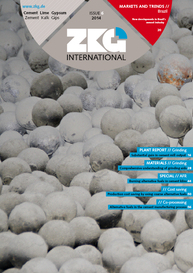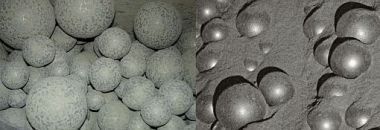Three big “M”s
In fact, immediately most of you will probably think of money or mistakes, but in this issue we are more dedicated to mills and mill optimization and to very inconspicuous helpers working in extremely low concentrations, but with great effect – grinding aids.
As long as finished products are ground, mills and their approaches to optimization form a couple as Yin and Yang. Enormous tonnages per hour are moved to grind clinker and other constituents down to a grain size finer than a hair. Holistically a complex field is opened up, which we will describe in two case studies. One deals with the optimization of drives and process control in a VRM, while the other study describes the optimization of a ball mill, and a small investment to get the best result.
A relative new discipline which is emerging is the use of grinding aids. The contribution leads us to a comprehensive understanding of the recently known mechanism. Despite the fact that this field seems to offer more new approaches, at the Technical University of Munich the Center for Advanced PCE Studies is opened for research in greater depth.
The third “M” stands for market where we want to look at Brazil to learn what will come up after economical crisis and the boom of the World Cup.
Finally – of course, how can I ignore this – let us take a look on RDF, which is the solid alternative fuel for the calciner, in Part III of our AFR special series.
CFD simulations can sharpen the understanding of the preheating process and helps to avoid fundamental failure and damage during co-processing in the calciner. The basics of processes in the calciner, and their adaptation for the extensive use of RDF are also described. Modern equipment is now additionally available to employ still more exotic and much larger material like the high calorific fraction (HCF) or biomass to the pyroprocess than to pre-treat difficult feedstock down to 80 mm-RDF or even 30 mm-SRF.
We wish you a relaxing break in your daily work and an interesting reading ... and if not, then please sign the tracer and pass on to your colleague, who is eagerly awaiting this issue!
Dr. Hubert Baier
Editor-in-Chief
ZKG International




